#Julie-Su History
Explore tagged Tumblr posts
Text
The In-Depth Look at Julie-Su Part 12: Sonic the Hedgehog Issues 120-125
Like with the Chaotix Caper arc before it Knuckles's absence means that the focus can actually be given to the side characters. Here we see Julie-Su reminiscing with Mighty.
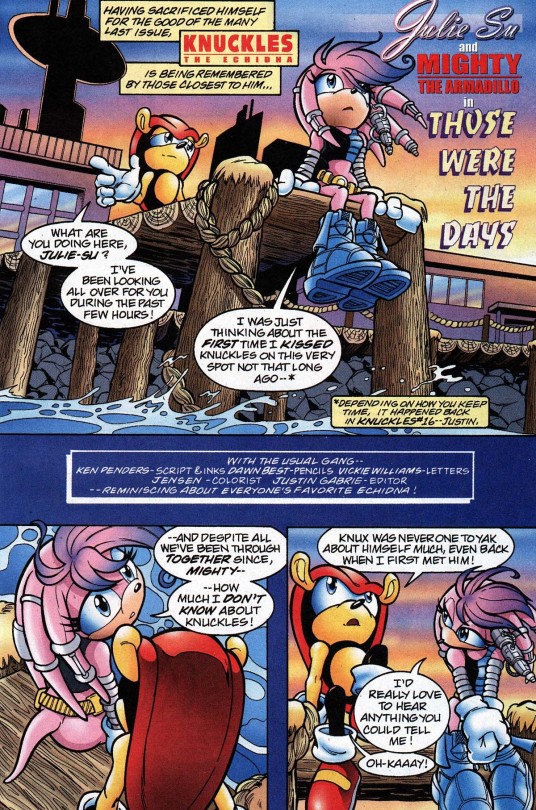

The subject of Knuckles though is truly a equivalent to the Bechel test. Even though he's gone he's still the main focus.
After this is Knuckles open casket funeral. It's so odd just to type those words. I highly doubt that the Sega of today would let a scene like the one below appear in the current comics.
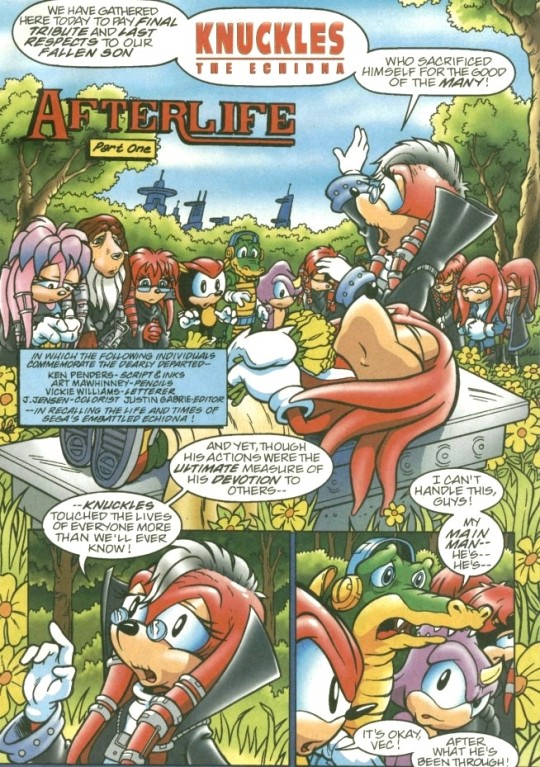

When we next see Julie-Su she appears to be in Knuckles's home which is a cavern/cave. I did some quick research and apparently caves are a natural part of a echidna's habitat.


Aww it's so adorable he kept a picture of her on his nightstand. Vector appears in the entrance to confront a already agitated Julie and the two start brawling it out.


Now it's Vector's turn to give Julie-Su a flashback story to how he first met Knuckles.

Meanwhile Knuckles in the afterlife goes through basically a clip show of his life including a recreation of Julie-Su's face reveal from Knuckles issue #4.

This goes on for a while until Knuckles's return in Sonic issue #125. This marks the first time Julie-Su was written by someone other then Penders as Karl Bollers was writing the main stories in the Sonic issues at the time. He will continue writing Julie-Su as Penders would shift his focus to the Mobius 25 Years Later back up stories starting in Issue 131.

Coming up the Home Arc and Return to Angel Island arc.
#julie su the echidna#knuckles the echidna#archie sonic#julie-su#archie knuckles#knuckles comic book#archie sonic the hedgehog#dark legion#chaotix#mighty the armadillo#vector the crocodile#Rouge the Bat#Julie-Su History#green knuckles
12 notes
·
View notes
Text
Liberals don't understand Hamilton
this isn't long and it isn't what you think it is, and it is topical to today, i promise! Im a leftist and i love the musical hamilton. I love it because it is very unintentionally truthful. It is written as a tragedy: like romeo and juliet it spoils the story in the first song so you don't riot at the end when people die. You don't do that in comedies, because people are happy at the end you can have surprises. I like hamilton because it realizes that the FOUNDING OF THIS COUNTRY WAS A TRAGEDY, the only redeeming factor are the small actions of individual people. Smart dudes made decisions because of racism and ambition and lust and then one of them dies!
Anyway, it is not a good play though because most people are too blinded by their love of the music and dance and the founding myths of the country to realize what it is trying to say. so in that sense the musical is a failure. it is propaganda. i don't even think LMM knows what the musical is saying. its so weird. Anyway, the relevant part. The climax of the story. Y'all realize that Jefferson is the villain of the story, not aaron burr, right? I mean, in real life Aaron Burr was also an asshole, but i mean, in the story. Jefferson is the racist, rapist slaveowner. THEY SAY THIS IN THE PLAY. For today, in my heavy handed allegory, Jefferson is Trump. He is the popular racist candidate. And he is running against Aaron Burr, the smart, feminist ambitious candidate who stands for nothing and grew up with Alexander Hamilton. He's committed no mistakes in the play. and YET. Alexander Hamilton (the moneyed interest, he represents the banks, he represents money, he represents capital), he picks Jefferson. They don't agree on anything. But he picks the racist. Because the racist will have his back. and he trusts in the strength of the institutions enough that jefferson won't fuck it up. Like, liberals wrote this story, they listen to it all the time. they know americans time after time prefer someone who has an ideology, even if they are a racist scumbag who keeps his six children as slaves. we put that guy on the MONEY. The point is the story is a tragedy. The point is Aaron burr isn't willing to fight for the nation he now gets to build, because he isn't willing to take a stand. So he doesn't get to build it. The racists and the capitalists do. And if you are all like, can't we all just hate on the racists who voted for trump, united as a group? No. I hate them 24/7 all the time, and people yell at me for not doing it right 24/7. im begging you to have principles and solidarity with the rest of the left because you cannot win on lesser evil voting. We are gonna need more principles the next 4 years.
#history repeats itself#not real history#aaron burr was a tyrant in real life#jefferson was just worse#i mean the analogy#anyway#i find it funny#liberals dont listen to their own mythology#hamilton#us history#people vote for those with beliefs#im gonna miss the good very progressive people in biden's cabinet#lina kahn and pete and yellen and julie su#(never blinken fuck him)
3 notes
·
View notes
Text
More good things the Biden administration is doing: OSHA heat safety rules for workers
Remember when Texas and Florida passed laws preventing local and municipal governments from implementing their own heat safety rules and said that if heat is such a big problem, OSHA should make rules that apply to everyone? If not, NPR can remind you. OSHA has now accepted the challenge, moving much faster than they usually do:
OSHA National News Release U.S. Department of Labor July 2, 2024 Biden-Harris administration announces proposed rule to protect indoor, outdoor workers from extreme heat WASHINGTON – The U.S. Department of Labor has released a proposed rule with the goal of protecting millions of workers from the significant health risks of extreme heat. If finalized, the proposed rule would help protect approximately 36 million workers in indoor and outdoor work settings and substantially reduce heat injuries, illnesses, and deaths in the workplace. Heat is the leading cause of weather-related deaths in the U.S. Excessive workplace heat can lead to heat stroke and even death. While heat hazards impact workers in many industries, workers of color have a higher likelihood of working in jobs with hazardous heat exposure. “Every worker should come home safe and healthy at the end of the day, which is why the Biden-Harris administration is taking this significant step to protect workers from the dangers posed by extreme heat,” said Acting Secretary of Labor Julie Su. “As the most pro-worker administration in history, we are committed to ensuring that those doing difficult work in some of our economy’s most critical sectors are valued and kept safe in the workplace.” The proposed rule would require employers to develop an injury and illness prevention plan to control heat hazards in workplaces affected by excessive heat. Among other things, the plan would require employers to evaluate heat risks and — when heat increases risks to workers — implement requirements for drinking water, rest breaks and control of indoor heat. It would also require a plan to protect new or returning workers unaccustomed to working in high heat conditions. “Workers all over the country are passing out, suffering heat stroke and dying from heat exposure from just doing their jobs, and something must be done to protect them,” said Assistant Secretary for Occupational Safety and Health Douglas L. Parker. “Today’s proposal is an important next step in the process to receive public input to craft a ‘win-win’ final rule that protects workers while being practical and workable for employers.” Employers would also be required to provide training, have procedures to respond if a worker is experiencing signs and symptoms of a heat-related illness, and take immediate action to help a worker experiencing signs and symptoms of a heat emergency. The public is encouraged to submit written comments on the rule once it is published in the Federal Register. The agency also anticipates a public hearing after the close of the written comment period. More information will be available on submitting comments when the rule is published. In the interim, OSHA continues to direct significant existing outreach and enforcement resources to educate employers and workers and hold businesses accountable for violations of the Occupational Safety and Health Act’s general duty clause, 29 U.S.C. § 654(a)(1) and other applicable regulations. Record-breaking temperatures across the nation have increased the risks people face on-the-job, especially in summer months. Every year, dozens of workers die and thousands more suffer illnesses related to hazardous heat exposure that, sadly, are most often preventable. The agency continues to conduct heat-related inspections under its National Emphasis Program – Outdoor and Indoor Heat-Related Hazards, launched in 2022. The program inspects workplaces with the highest exposures to heat-related hazards proactively to prevent workers from suffering injury, illness or death needlessly. Since the launch, OSHA has conducted more than 5,000 federal heat-related inspections. In addition, the agency is prioritizing programmed inspections in agricultural industries that employ temporary, nonimmigrant H-2A workers for seasonal labor. These workers face unique vulnerabilities, including potential language barriers, less control over their living and working conditions, and possible lack of acclimatization, and are at high risk of hazardous heat exposure.
#biden harris administration#biden administration#osha#heat safety#worker safety#biden 2024#biden harris 2024#vote for democrats#vote blue#vote biden#us politics#us law
983 notes
·
View notes
Text
Upcoming Taiwanese BLs
We are over halfway through 2024, and as usual, I've only had two Taiwanese BLs (Unknown, Anti Reset), so even though I'm sitting on a stack of BLs to watch every single week from other countries, call me Smaug because I need MORE!
Honorary Korean BL: Uncovering the Curse of Taekwondo (2024)

Former friends (and possibly lovers) reunite at a funeral after going their separate ways for over a decade, but, honestly, I don't care about the plot because this comes from Hwang Da Seul who was behind Blueming, To My Star, and Where Your Eyes Linger, so I know it's going to be amazing. There is a movie and a series version, and the movie already premiered at the Bucheon International Fantastic Film Festival in South Korea at the beginning of July. The runtime was 154 minutes, but the series is eight episodes around thirty minutes each and is currently seeking distribution.
First Note of Love (August 2024)
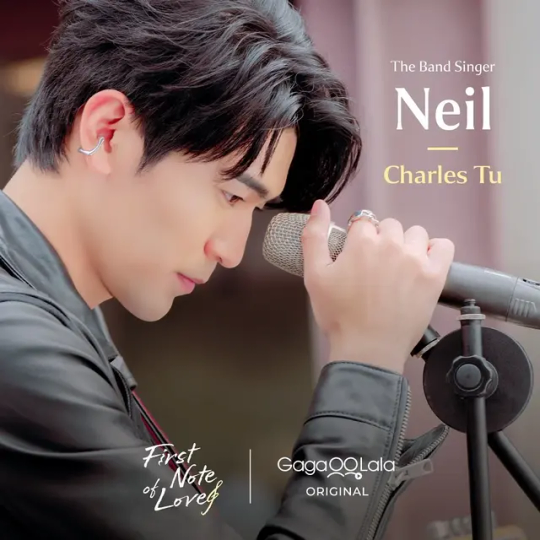
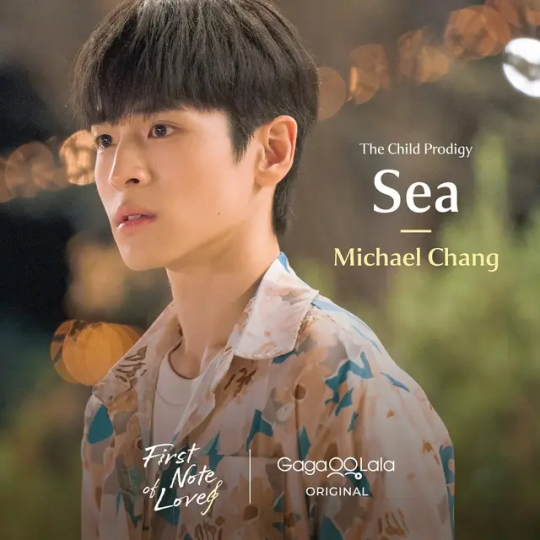
My most beloved, Charles Tu, from my favorite BL HIStory 4: Close to You is finally returning to me in the form of a washed-up singer who stepped away from the spotlight due to a tragic event only to be dragged back in by an up-and-coming composer who is also a longtime fan. It is a joint production with Thailand's Star Hunter Entertainment (the company behind Big Dragon, Love Senior, City of Stars, and Sunset x Vibes) and features a side couple of a Thai singer and a Taiwanese agent. It will involve singing, but I'm already too comfortable in my seat with my snacks to care.
Fragrance of the First Flower Season 2 (2024)

The lone GL holding down this list finished filming late last year and Gagaoolala has been releasing BTS images since filming began, so it'll likely land there once it is released. The series is a continuation of the 2021 first season, which people were not thrilled about because of the ending, so this season should solve some of the angst we were left with by exploring the two women actually coming together to navigate life as a couple.
The Only One (August 2024)
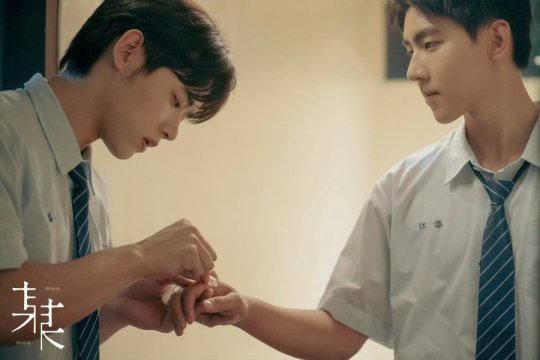
Directed by Liu Kuang Hui, who directed Your Name Engraved Herein, written by the same folks behind The Untamed, and based on Mu Su Li's novel A Certain Someone which is about two boys whose parents are dating and move in together, so the mains go from enemies-to-??? and the only reason for the question marks on a Taiwanese BL is because the word on these BL streets (and his MDL page) is one of the actors works heavily in China, so this might be the reason this one has been was in limbo even though filming finished earlier this year, but the socials are still posting it's coming this year.
See Your Love (Filming Complete)

This co-production with Japan is about a rich man who falls in love with his hearing-impaired caregiver. It finished filming at the end of May and will have those sweet sweet Taiwanese BL cameos from some Be Loved in House: I Do and Plus and Minus folks PLUS it will be the first cameos for the Kiseki: Dear to Me guys since the company that produced their show is the same one for this show.
Impression of Youth (Filming Complete)

Very little is known about the plot of this teacher-student romance, but it comes from the same folks who produced DNA Says Love You and one of the mains, Muji Hsu, was also the lead in 2020's Because of You. Filming finished at the end of May, and the company stated it would be out before the end of the year.
Islanders (late 2024/early 2025)
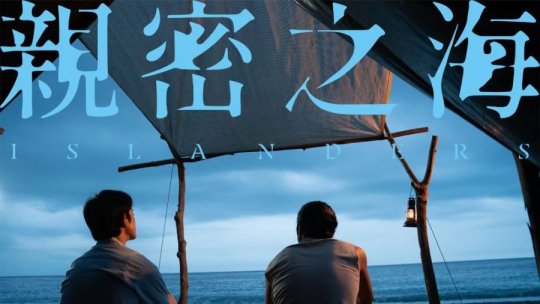
This is based on a novel, Islands, by Lolita Hu, features some well known Taiwanese actors, and for a bit was under the name Sea of Intimacy. It's being presented as an 'older BL' but the MDL summary is sparse of the BL-plot: Hung, a successful entrepreneur, has three intimate relationships: his wife, his mistress, and his girlfriend. The lives of these individuals in their 20s, 30s, 40s, and 50s are intertwined because of romance, but their story extends beyond that. When Hung faces criticism on social media and loses everything, the way they react tells us how they see the world.
Wishing Upon the Shooting Star & The Young Gangster (2025)
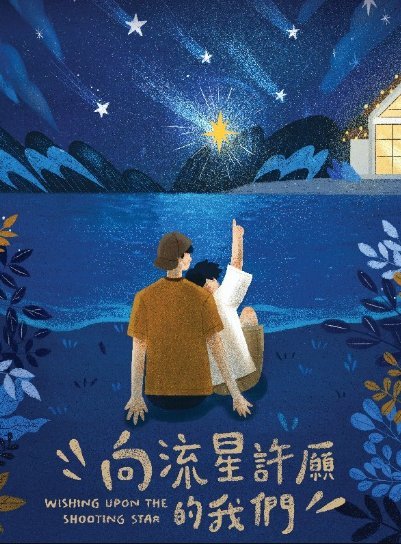

These two deal with completely different plots but are together because of one reason: Ray Jiang. He is the director for these two and was the director for Unknown, My Tooth Your Love, and We Best Love. The companies behind them have stated the series are coming next year, but the guess is Ray's busy schedule is part of the hold up since he has a Netflix series in the works and apparently a film featuring Sam Lin (We Best Love) on the way. The Young Gangster is based on a novel and deals with a research assistant gathering information on the mafia (and we know how the mafia works in BLs), while Shooting Star deals with a man wishing that nobody notices him once he returns to his hometown after being fired. The wish backfires and nobody recognizes him, not even his dad or the boy he confessed to in high school! BL Mafia, Sideways Wishes, and Ray Ray are my favorite types of snacks!
Pray in Love (2025?)
youtube
A police officer falls in love with a man only to realize that man is the son of a prominent leader on the day of his arranged wedding in which he was hired as security for the event. The series already released a short film of the basic premise for fundraising efforts and festival rounds. Apparently, filming has started on the series, but there is no concrete confirmation from the production company.
Eternal Butler (2025)
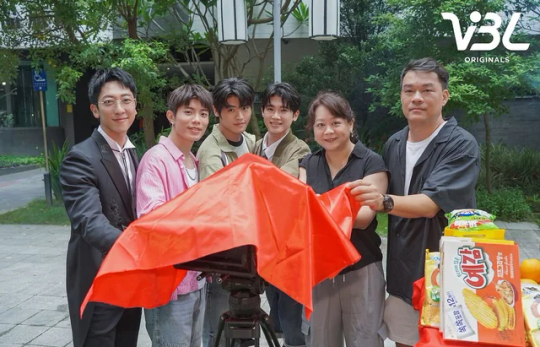
Edited to add thanks to @cankersoregirl! This is a sequel to VBL's Anti Reset and began filming in early July. It focuses on Ever 4 who is sent to be a bodyguard for a young rich man only to encounter a rebellious man.
That Year, 162 Rainfalls (In Production?)


Is this a movie? Is it a series? Is it happening?! Who knows, but last year, it finally got funding and a director attached to it, but the real kicker is Lin Pei Yu is the screenwriter, and she is the writer behind all of my favorite Taiwanese BLs: We Best Love, HIStory 3: Trapped, My Tooth Your Love, Kiseki: Dear to Me, and so much more. Basically, the company struck gold getting her for this story about two archers and best friends. One gets confessed to but admits he actually is in love with his best friend, but before love can happen, the best friend has an accident and falls into a coma. It is based on a novel of the same name, and the plot is way more hefty than this, but I know Lin Pei Yu will make it work!
Four Seasons (Pre, Pre, PRE-Production?)
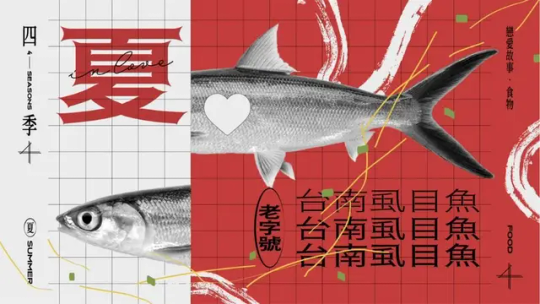

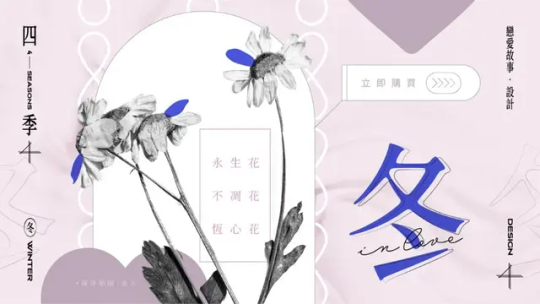

This is supposed to be four different stories focusing on different seasons, and is rumored to be VBL's next group of shows since the company has stated it wants to continue its formula from last year of releasing slightly connected shows. VBL/Vidol was behind Stay by My Side, VIP Only, You Are Mine, and Anti Reset. Winter is about a scrooge CEO and a florist who is hired to decorate for the CEO's Christmas event. Spring is about two boys meeting on a bus and falling in love over music. Summer is about a market owner and a chef falling in love over food. Autumn is about two former best friends seeing each other ten years after graduating and exploring their hometown together.
Connecting to You (Pre-Production?)
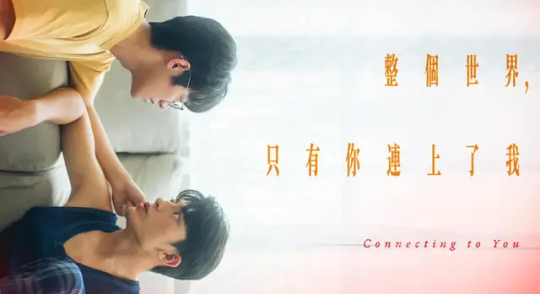
It seems to have gotten funding, but it's been quiet since which isn't surprising because when it comes to Taiwanese BLs, nothing is really heard until filming begins or even after it ends. I still have my hopes high because this is *THE* BL for me as it deals with a man who can see colored threads connecting people and one day runs into a policeman whose thread connects to him. The thread between them begins to change color, from silver-grey to yellow, representing friendship, and even to red, representing love. If I have to sell an organ or two to fund this myself, I. Will. Do. It. I NEED THIS!
And this wouldn't be a Petty Post if I didn't include this final one:
HIStory 15: Freed (GIVE IT TO ME!)
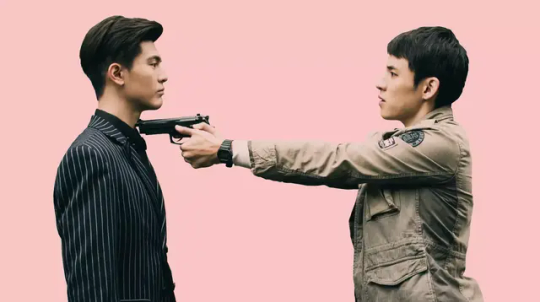
I don't care if this a long shot. I don't care if I seem crazy always asking for this. I. Deserve. It. HIStory 3: Trapped ended with our best mafia boy in prison, and it's time he got out! The HIStory franchise has not had a series since 2022's HIStory 5: Love in the Future, and although there have been rumors that a HERstory story might be next, I think bringing back a popular story would be just as good. I will ask for this every chance I can until I get it, and I plan on living a long life, so I got time!
#taiwanese bls#upcoming taiwanese bls#give me more please#MORE!#so many to list but I'm gonna do it#first note of love#fragrance of the first flower 2#the only one#see your love#impression of youth#islanders#wishing upon the shooting star#the young gangster#pray in love#That Year‚ 162 Rainfalls#four seasons#connecting to you#HIStory 15: Freed WHEN?!#WHEN?!#Give it to me already!#Uncovering the Curse of Taekwondo#eternal butler
465 notes
·
View notes
Text
you will be traumatized after viewing this page
☆ intro post:
artist i like/bands: nicole dollanganger, hole, massive attack, black sabbath, narrow head, cocteau twins, my bloody valentine, slowdive, fleshwater, mediavolo, the smiths, LSD and the search for god, dean blunt, whirr, yves tumor, steve lacy, tyler the creator, deftones, tame impala, memo boy, eye dress, alex g, duster, strawberry guy, mac demarco, tv girl, kendrick lamar, L7, the offspring, MSI, ICP, linkin park, mötley crüe, michael jackson, aaliyah, kmfdm, chemical brothers, nine inch nails, rammstein, the smashing pumpkins, type o negative, alice in chains, korn, limp bizkit, system of a down, soulfly, metallica, megadeath, julie, radiohead, mazzy star, fiona apple, blue smiley, title flight, ethel cain ♡
favorite movies ever: natural born killers, manic 2001, firefox 1996, anora, american honey, i believe in unicorns, reservoir dogs, pulp fiction, the lost highway, mullholand drive, cape fear, taxi driver, american psycho, bully 2001, pink flamingos, carrie, down in the valley, lolita, kill bill vol 1, kill bill vol 2, thirteen, the butterfly effect, the secretary, death proof, dazed and confused, donnie darko, elephant 2003, palo alto, look away, before i fall, fast times at ridgemont high, detroit rock city, home alone, metal lords, the dirt, the craft, the doom generation, lords of chaos, waves, little birds, buffalo 66, euro trip, beevis and butthead do america, ginger snaps, DUCK!, smiley face, nowhere 1997, mysterious skin, dinner in america, white oleander, bones and all, fish tank, the loved ones, the v su, mid 90s, water lilies, empire records, words on bathroom walls, hick, may, zola, gummo, lilya-4-ever, speak, priscilla, vivarium, flower, teeth, kids 1995, brain scan 1994, prozac nation, she's too young, american history x
i made a goal to watch 100 movies this summer, here are the ones i recently watched: american history x, the dirties, badlands
i also have favorite directors like: Quentin Tarantino, Gregg Araki, David Lynch RIP, Andrea Arnold, Larry Clark, Harmony Korine, Martin Scorsese
favorite shows: skins, boy meets world, wayne, full house, beevis and butthead, breaking bad, mtv daria, mtv downtown, twin peaks, outer banks, euphoria, american horror story
favorite games: doom, minecraft, GTA, silent hill, life is strange, fnaf, yandere simulator, cry of fear, puppet combo games, sims 2, 3 and 4, fatal frame, project zero, PS2 horror games, rdr
41 notes
·
View notes
Text
重建清真寺记
🇪🇸 La inscripción de piedra de 1489, conocida como "Registro de la Reconstrucción del Templo Puro y Verdadero" (重建清真寺记), se erigió en julio de 1489 en Kaifeng, China. Es una de las primeras inscripciones de la comunidad judía de Kaifeng y conmemora la reconstrucción de la sinagoga después de ser destruida por una inundación del Río Amarillo en 1461. Esta inscripción fue escrita por Jin Zhong, un judío de Kaifeng, y mide 60 x 30 x 5 pulgadas, hecha de piedra caliza gris oscuro. La inscripción describe tres temas principales: el origen e historia del judaísmo, las prácticas de oración y arrepentimiento, y la trayectoria del judaísmo en China y su relación con el confucianismo. Destaca cómo los judíos de Kaifeng se adaptaron a las costumbres chinas y cómo las similitudes culturales con la comunidad musulmana Hui a menudo llevaron a confusiones entre las dos. La inscripción también menciona figuras históricas clave, como el rabino Levy y los hermanos Jin, y detalla la integración de conceptos chinos y judíos, fusionando figuras como Pangu y Adán. La estela aún existe y fue trasladada a la Catedral de la Trinidad por la Misión Anglicana Canadiense en 1912.
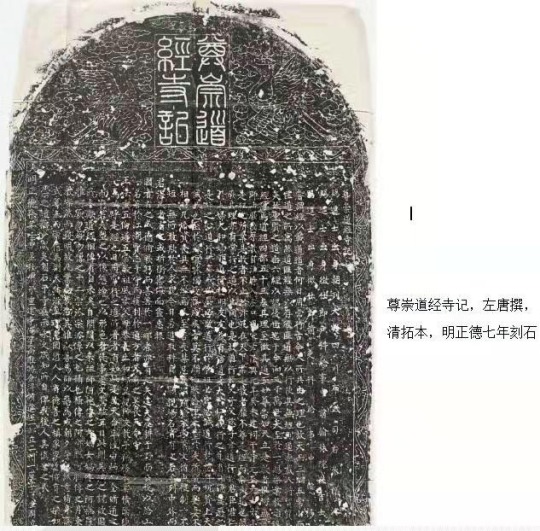

🇺🇸 The 1489 stone inscription, known as the "Record of the Rebuilding of the Pure and Truth Temple" (重建清真寺记), was erected in July 1489 in Kaifeng, China. It is one of the earliest inscriptions from the Kaifeng Jewish community and commemorates the reconstruction of the synagogue after its destruction by a Yellow River flood in 1461. This inscription was written by Jin Zhong, a Kaifeng Jew, and measures 60 x 30 x 5 inches, made of dark gray limestone. The inscription covers three main themes: the origin and history of Judaism, practices of prayer and repentance, and the trajectory of Judaism in China and its relationship with Confucianism. It highlights how Kaifeng Jews adapted to Chinese customs and how cultural similarities with the Hui Muslim community often led to confusion between the two. The inscription also mentions key historical figures, such as Rabbi Levy and the Jin brothers, and details the integration of Chinese and Jewish concepts, merging figures like Pangu and Adam. The stele still exists and was moved to Trinity Cathedral by the Canadian Anglican Mission in 1912.
#judaísmo#judaism#jewish#judío#israel#cultura judía#kaifeng#china#jumblr#judíos#historia judía#1489#重建清真寺记
87 notes
·
View notes
Note
I don't know if you have already answered this but what do you think will happen at the security trial. I'm exhausted with this guy. He makes it all so miserable. I am already thinking that I don't want to look any news the days of the trial because I can't stand his complains and his crying for more privilege. But it's in the middle of the tour and I like tours the comments and the fun we have as royalfans but he is destroying everything with his negativity. They make it all miserable just like them. And on top of that I think he win. He already have a security when he is here but what he wants is to continue to have "royal" engagements, to be seen, for his brand. And of course he wants to present that victory as a sign and a tool to other countries especially USA to pay for their security. Allegedly their security costs 2m per year, that is alot of money and they need it.
So the RAVEC trial is an appeal.
The history, as I recall it:
Harry sued RAVEC when he lost his security detail and IPP status. He wants both back.
The case went to trial and the judge found in RAVEC’s favor; no IPP for Harry.
Harry appealed the ruling, citing that RAVEC disclosed during the trial they didn’t follow their official procedure to evaluate his security status.
Judge denied the appeal.
Harry appealed the appeal. A new judge found that Harry’s claim (that RAVEC didn’t follow their own procedure when they evaluated his case) had merit and overturned the denial of the appeal.
Now the appeal is going to court; however, the legal issue this time isn’t the matter of Harry’s security. The issue is “did RAVEC follow their own procedure when they evaluated his case and denied him security?”
The outcome will be either “yes, RAVEC followed their procedures” or “no, RAVEC didn’t follow their own procedures.” If RAVEC is found to have followed their procedures, then I believe that’s it for Harry and his lawsuit is over. If RAVEC is found to have not followed their procedure, then Harry is asking the court to force RAVEC to reevaluate his case in accordance with their own documented procedure and I think the court would do that.
But the underlying issue is two-fold:
1. Harry claims his security was incorrectly downgraded in March of 2020 when he was still entitled to certain protections. (Or July? I can’t remember.)
2. Harry wants to be evaluated now according to his current status as a child/direct descendant of the monarch, not in his previous status as a grandchild of the monarch.
So regardless of whether Harry wins or loses the appeal trial, I think the ultimate end result will be that even if RAVEC reevaluates him as the child of the monarch, he still doesn’t get full-time IPP and he stays on the same “plan” he has now, which is the case-by-case evaluation. Because that’s the same “plan” and status that Anne, Edward, and Andrew had under The Queen; IPP and taxpayer-paid security only for events/engagements when they were officially working on Her Majesty’s behalf, which was organized on a case by case basis.
I feel like where Harry might be confused (and hence the lawsuit) is that Anne, Edward, and Andrew had other security details. He probably thinks they were taxpayer-paid security/RPOs but I bet they were privately paid for by The Queen and Harry doesn’t know that (because details have never mattered when they aren’t about him).
So even if Harry got special treatment in 2020, whether for better or for worse, ultimately it doesn’t matter. Because the rules - which his lawsuit made public, mind you - state that only the direct heir gets IPP and everyone else has to request it on a case-by-case basis.
I think that’s the rub. Either Harry still thinks he’s in the direct heir category or Harry thinks everyone else’s cases get rubber-stamped while his always get blocked or rejected on procedural grounds. Maybe they are, maybe they aren’t. But the main thing Harry keeps forgetting is that they all live in the UK and play by the rules. He lives in the US and claims an enormous criminal enterprise is against him, so of course the rules will be applied more severely to keep him safe because he believes the threat against him so dangerous and obviously no one wants anything bad to happen to him.
I don’t see how Harry can win his IPP back, but I also have no doubt that if there’s a way, Charles will find it.
34 notes
·
View notes
Text

LETTERS FROM AN AMERICAN
January 18, 2025
Heather Cox Richardson
Jan 19, 2025
Shortly before midnight last night, the Federal Trade Commission (FTC) published its initial findings from a study it undertook last July when it asked eight large companies to turn over information about the data they collect about consumers, product sales, and how the surveillance the companies used affected consumer prices. The FTC focused on the middlemen hired by retailers. Those middlemen use algorithms to tweak and target prices to different markets.
The initial findings of the FTC using data from six of the eight companies show that those prices are not static. Middlemen can target prices to individuals using their location, browsing patterns, shopping history, and even the way they move a mouse over a webpage. They can also use that information to show higher-priced products first in web searches. The FTC found that the intermediaries—the middlemen—worked with at least 250 retailers.
“Initial staff findings show that retailers frequently use people’s personal information to set targeted, tailored prices for goods and services—from a person's location and demographics, down to their mouse movements on a webpage,” said FTC chair Lina Khan. “The FTC should continue to investigate surveillance pricing practices because Americans deserve to know how their private data is being used to set the prices they pay and whether firms are charging different people different prices for the same good or service.”
The FTC has asked for public comment on consumers’ experience with surveillance pricing.
FTC commissioner Andrew N. Ferguson, whom Trump has tapped to chair the commission in his incoming administration, dissented from the report.
Matt Stoller of the nonprofit American Economic Liberties Project, which is working “to address today’s crisis of concentrated economic power,” wrote that “[t]he antitrust enforcers (Lina Khan et al) went full Tony Montana on big business this week before Trump people took over.”
Stoller made a list. The FTC sued John Deere “for generating $6 billion by prohibiting farmers from being able to repair their own equipment,” released a report showing that pharmacy benefit managers had “inflated prices for specialty pharmaceuticals by more than $7 billion,” “sued corporate landlord Greystar, which owns 800,000 apartments, for misleading renters on junk fees,” and “forced health care private equity powerhouse Welsh Carson to stop monopolization of the anesthesia market.”
It sued Pepsi for conspiring to give Walmart exclusive discounts that made prices higher at smaller stores, “[l]eft a roadmap for parties who are worried about consolidation in AI by big tech by revealing a host of interlinked relationships among Google, Amazon and Microsoft and Anthropic and OpenAI,” said gig workers can’t be sued for antitrust violations when they try to organize, and forced game developer Cognosphere to pay a $20 million fine for marketing loot boxes to teens under 16 that hid the real costs and misled the teens.
The Consumer Financial Protection Bureau “sued Capital One for cheating consumers out of $2 billion by misleading consumers over savings accounts,” Stoller continued. It “forced Cash App purveyor Block…to give $120 million in refunds for fostering fraud on its platform and then refusing to offer customer support to affected consumers,” “sued Experian for refusing to give consumers a way to correct errors in credit reports,” ordered Equifax to pay $15 million to a victims’ fund for “failing to properly investigate errors on credit reports,” and ordered “Honda Finance to pay $12.8 million for reporting inaccurate information that smeared the credit reports of Honda and Acura drivers.”
The Antitrust Division of the Department of Justice sued “seven giant corporate landlords for rent-fixing, using the software and consulting firm RealPage,” Stoller went on. It “sued $600 billion private equity titan KKR for systemically misleading the government on more than a dozen acquisitions.”
“Honorary mention goes to [Secretary Pete Buttigieg] at the Department of Transportation for suing Southwest and fining Frontier for ‘chronically delayed flights,’” Stoller concluded. He added more results to the list in his newsletter BIG.
Meanwhile, last night, while the leaders in the cryptocurrency industry were at a ball in honor of President-elect Trump’s inauguration, Trump launched his own cryptocurrency. By morning he appeared to have made more than $25 billion, at least on paper. According to Eric Lipton at the New York Times, “ethics experts assailed [the business] as a blatant effort to cash in on the office he is about to occupy again.”
Adav Noti, executive director of the nonprofit Campaign Legal Center, told Lipton: “It is literally cashing in on the presidency—creating a financial instrument so people can transfer money to the president’s family in connection with his office. It is beyond unprecedented.” Cryptocurrency leaders worried that just as their industry seems on the verge of becoming mainstream, Trump’s obvious cashing-in would hurt its reputation. Venture capitalist Nick Tomaino posted: “Trump owning 80 percent and timing launch hours before inauguration is predatory and many will likely get hurt by it.”
Yesterday the European Commission, which is the executive arm of the European Union, asked X, the social media company owned by Trump-adjacent billionaire Elon Musk, to hand over internal documents about the company’s algorithms that give far-right posts and politicians more visibility than other political groups. The European Union has been investigating X since December 2023 out of concerns about how it deals with the spread of disinformation and illegal content. The European Union’s Digital Services Act regulates online platforms to prevent illegal and harmful activities, as well as the spread of disinformation.
Today in Washington, D.C., the National Mall was filled with thousands of people voicing their opposition to President-elect Trump and his policies. Online speculation has been rampant that Trump moved his inauguration indoors to avoid visual comparisons between today’s protesters and inaugural attendees. Brutally cold weather also descended on President Barack Obama’s 2009 inauguration, but a sea of attendees nonetheless filled the National Mall.
Trump has always understood the importance of visuals and has worked hard to project an image of an invincible leader. Moving the inauguration indoors takes away that image, though, and people who have spent thousands of dollars to travel to the capital to see his inauguration are now unhappy to discover they will be limited to watching his motorcade drive by them. On social media, one user posted: “MAGA doesn’t realize the symbolism of [Trump] moving the inauguration inside: The billionaires, millionaires and oligarchs will be at his side, while his loyal followers are left outside in the cold. Welcome to the next 4+ years.”
Trump is not as good at governing as he is at performance: his approach to crises is to blame Democrats for them. But he is about to take office with majorities in the House of Representatives and the Senate, putting responsibility for governance firmly into his hands.
Right off the bat, he has at least two major problems at hand.
Last night, Commissioner Tyler Harper of the Georgia Department of Agriculture suspended all “poultry exhibitions, shows, swaps, meets, and sales” until further notice after officials found Highly Pathogenic Avian Influenza, or bird flu, in a commercial flock. As birds die from the disease or are culled to prevent its spread, the cost of eggs is rising—just as Trump, who vowed to reduce grocery prices, takes office.
There have been 67 confirmed cases of the bird flu in the U.S. among humans who have caught the disease from birds. Most cases in humans are mild, but public health officials are watching the virus with concern because bird flu variants are unpredictable. On Friday, outgoing Health and Human Services secretary Xavier Becerra announced $590 million in funding to Moderna to help speed up production of a vaccine that covers the bird flu. Juliana Kim of NPR explained that this funding comes on top of $176 million that Health and Human Services awarded to Moderna last July.
The second major problem is financial. On Friday, Secretary of the Treasury Janet Yellen wrote to congressional leaders to warn them that the Treasury would hit the debt ceiling on January 21 and be forced to begin using extraordinary measures in order to pay outstanding obligations and prevent defaulting on the national debt. Those measures mean the Treasury will stop paying into certain federal retirement accounts as required by law, expecting to make up that difference later.
Yellen reminded congressional leaders: “The debt limit does not authorize new spending, but it creates a risk that the federal government might not be able to finance its existing legal obligations that Congresses and Presidents of both parties have made in the past.” She added, “I respectfully urge Congress to act promptly to protect the full faith and credit of the United States.”
Both the avian flu and the limits of the debt ceiling must be managed, and managed quickly, and solutions will require expertise and political skill.
Rather than offering their solutions to these problems, the Trump team leaked that it intended to begin mass deportations on Tuesday morning in Chicago, choosing that city because it has large numbers of immigrants and because Trump’s people have been fighting with Chicago mayor Brandon Johnson, a Democrat. Michelle Hackman, Joe Barrett, and Paul Kiernan of the Wall Street Journal, who broke the story, reported that Trump’s people had prepared to amplify their efforts with the help of right-wing media.
But once the news leaked of the plan and undermined the “shock and awe” the administration wanted, Trump’s “border czar” Tom Homan said the team was reconsidering it.
LETTERS FROM AN AMERICAN
HEATHER COX RICHARDSON
#Consumer Financial Protection Bureau#consumer protection#FTC#Letters From An American#heather cox richardson#shock and awe#immigration raids#debt ceiling#bird flu#protests#March on Washington
30 notes
·
View notes
Note
The first volume of the Lara Su Chronicles is currently due to come out by July 2024 and it's mostly a remaster of Mobius 25 Years Later. Assuming it does come out, will you buy it and review it
(thank you for reminding me to check Ken's website)
Looks like this is finally the real deal. He's taking preorders, and he says he's putting in the order with his publisher within the next two months. I will, of course, be obligated to look at this in some capacity. I've been waiting for literally anything from TLSC to release for the entire 9-year history of this blog. I doubt I'll have much to say about the reprints of M25YL, but it does have those first two chapters of The Lara-Su Chronicles that he's been posting WIPS of for god knows how many years.
Lord knows what happened to the motion comic app that these were supposed to be released on. He seems to mainly just be telling people to buy the $36 hardcover book with the reprints included, and now that he's left Twitter and moved over to his own personal blog I don't really feel like sifting through his posts about the Beatles and whatnot to find an answer. So I guess this means I probably have to buy the book. Which means giving Ken my home address lmao
Anyway in case anyone was curious, yes, he really did go with this cover art that's just a vastly worse copy of Spaziante's cover for Archie Sonic #131


And yes, Anthony Mackie is still here

239 notes
·
View notes
Text
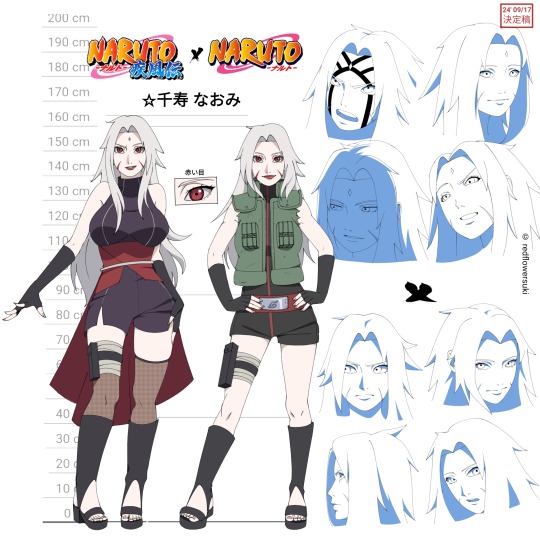
Naomi Senju | Part 1 & 2 Settei & Designs
+ full bio & facts !
art credit to @ redflowersuki on instagram ! Name: Naomi Senju 直美 千手 Age: 26-27 (part 1) 30-31 (part 2) Date of Birth: July 13th Zodiac: Cancer Status: Alive Current Affiliation: Konohagakure Height: 5’2 / 157.5cm (part 1) 5’4 or 162.5cm (part 2) Weight: 120 lbs or 54 kg Rank: Jonin / Medical Nin MBTI: INTP Gender & Pronouns: Ciswoman & She/Her Sexuality: Bisexual Romantic Interest(s): Su (@/lemony_su on insta), Zanaku (@/cursedjinchuriki on insta)
Part 1 + 2 Facts ᯓᡣ𐭩
Daughter of Lady Tsunade and Jiraiya
She was a child prodigy
Wood Style User
Begins training for her Hundred-Healing’s mark with her mother during part 1 & unlocks it at the beginning of part 2
Attained one of Orochimaru’s curse marks around the same time as her teammate Anko. (one of the early forms, before Jugo)
Her Curse Mark form’s design is inspired by a mouse.
The Jonin vest she’s worn since age 16 when she became a Jonin once belonged to Orochimaru. It is among his abandoned belongings after he attacked and fled the village, and Naomi is unable to just leave it in the trash. She wears it as a reminder of who drives her hate, passion, and what she’s working towards (aka bringing Orochimaru back)
Spends most of her time in part 1 attempting to locate Orochimaru, both to ‘bring Sasuke back,’ and to bring her old sensei to justice. (or to bring him… home)
Often seen reading her father’s novels
Meets both Su and Zanaku (in that order) during early shippuden
Gains the sword of kusanagi after episode 138 of the anime.
Personality Traits ♡⸝⸝
Positive – Persuasive, Analytical, Convincing, Intuitive, Efficient, Caring, Blunt, Honest, Often on High Alert, Observational, Passionate, Intelligent, Calculated, Ambitious, Tactical, Creative, Studious, Witty, Unconventional, Aloof, Merciful, Understanding, Hardworking, Innovative, Resourceful, Resilient
Negative – Abrasive, Emotional, Bipolar, Stubborn, Morbid, Obsessive, Indecisive, Undisciplined, Somewhat Disorganized, Addictive, Impulsive, Paranoid, Resentful, Self-Destructive, Temperamental, Snarky, Restless, Sarcastic, Perverted
Life Motto – “If you’re not obsessed with your life, change it.”
Fun Facts⋆✴︎˚。⋆
She is ambidextrous (both right-handed and left-handed, technically.)
Naomi roughly translates to “straight and beautiful.” The kanji for Nao means “blunt, honest, and/or frank.” And Mi which means “Beauty.”
A heavy drinker and regular smoker
She's read every one of her father's 'romance' novels
Close/Best friends with Kakashi, previously close & even protective of/with Obito during their childhood
Like her mother, she's often called a 'princess' due to her clan and heritage relating to the Hokages throughout the village's history.
Her favorite color is lilac
She's an 'oddly skilled cook' according to anyone who's eaten food prepared by her.
The Jonin vest she’s worn since age 16 when she became a Jonin once belonged to Orochimaru. It is among his abandoned belongings after he attacked and fled the village, and Naomi is unable to just leave it in the trash. She wears it as a reminder of who drives her hate, passion, and what she’s working towards (aka bringing Orochimaru back)
Spends most of her time attempting to locate Orochimaru, both to ‘bring Sasuke back,’ and to bring Orochimaru to justice. (or to bring him… home)
Capable of Water and Earth Release. Eventually learning how to perform Wood Style Release due to a mixture of reasons such as; Her Senju heritage, her natural chakra nature being water and her being capable of earth release, her chakra control and ability to mix the natures at will, and the Hashirama cells from Orochimaru’s initial curse mark form.
Despite taking after both of her parents in a multitude of ways, she refuses to ever begin or try gambling due to how it affected her relationship with her mother when she was young.
As a child, she felt insecure because of her albinism until her mother told her about her great-uncle Tobirama Senju - who also had albinism. Naomi began to wear her face paint like him on her cheeks afterward, but only two instead of three in a way to also nod to her father.
Attains Orochimaru’s old sword of Kusanagi after his death in Episode 138 of the anime. The sword being dropped after Itachi kills him, retrieved by Pakkun who is later tracking Sasuke’s scent and transferred from Pakkun to Kakashi to Naomi.
Clan Info⟡
Clan Name: Senju Specialty: The Senju clan is known as "the clan with a thousand skills" (千の手を持つ一族, "sen no te o motsu ichizoku") because they can master ninjutsu, taijutsu, genjutsu, and other techniques to give themselves a variety of skills for fighting. The Senju clan's name, "Senju" (千手), directly means "a thousand skills" or "a thousand hands." Kekkei Genkai: Wood Release + Hair Manipulation Ninja InformationHome Village: The Hidden Leaf / Konohagakure Current Village: The Hidden Leaf / Konohagakure Academy Graduation Age / Genin Age: 6 Chūnin Promotion Age: 10 Rank: Jonin Previous Teammates: Anko Mitarashi & Tokuma Hyuga Previous Sensei(s): Orochimaru Nindo: “What is meant to be will always find a way.” referring to how she truly believes if something is meant to be, it’ll happen no matter what. Natural Chakra Nature: Water (although capable of Earth, Wind, and Wood.)
Stats ❣
Ninjutsu - 4 / 4 Taijutsu - 2.5 / 3 Genjutsu - 3.5 / 3.5 Intelligence - 4.5 / 5 Strength - 5 / 5 Speed - 3.5 / 3.5 Stamina - 3 / 3 Hand Seals - 4 / 4 Total - 30 / 31
Likes
Reading
Romance or Action/Adventure Novels
Rain
Drinking
Training
Red Spider Lillies
Mice / Small Rodents
Smoking
Snakes
Cooking Meals (for herself or others)
Picnics
Long Hair (both on her or those she finds attractive)
Routine/Repetition
Competition
Caffeinated Drinks (Especially Tea)
Studying (Jutsu’s, Science and History)
Particularly Fond of Biology
Teaching / Educating
Misunderstood People
Children
Dislikes
High Pitched Voices
Hot Weather
Eggplant (the actual vegetable)
Having Her Picture Taken
Crowded Rooms
Mushrooms
Winged or Flying Insects / Bugs
Sweating
Lightning
Riddles
Her Hair Being Touched
Losing to Those She Considers Weaker than She is
Gambling Without a Strategy (So Most Gambling)
Sour Sweets or Foods
Laundry
#oc: naomi senju#oc: naomi#naruto fanart#naruto#naruto shippuden#oc art#naruto ocs#naruto oc#naruto art#naruto shippuden ocs#naruto shippuden oc#naruto shippuden fanart#ocs#my ocs#my characters#original character art#original character#my oc art#oc biography#oc bio#original character oc#naruto original character#oc reference#oc ref sheet#oc refrence sheet#reference sheet#oc info#oc intro#oc stuff#my ocs <3
52 notes
·
View notes
Text

Continuing the Archie Echidna characters redraw trend, here's a design for Aurora! A character that probably no one likes or cares about!
Had ideas for an Archie Sonic rewrite, and been redoing the lore and backstory stuff. I started taking notes but ended up mostly writing about Echidna history. Changed up the story of Enerjak, the Brotherhood of Guardians, the Dark Legion, and of course, Aurora. So I just felt like drawing her, and she came out soo good too! Also wanted more practice drawing echidnas. Might try to draw Enerjak/Dimitri soon-ish. Definitely gotta draw Julie-su at some point too.
There's a lot of other lore and backstory needed to tell Aurora's story, but the short version is that she was a prominent figure in Echidna history. After the destruction of the Echidna Empire (which would take up a whole post by itself), it was Aurora that gathered what remained of her people and lead them in rebuilding their society. She was hailed as a hero, a savior, a messiah, becoming the first female Guardian, and the first Matriarch of her people. Her name is still spoken in reverence many generations later.
Might do some lore dumps later if people are interested. Still gotta organize my thoughts and notes some more tho.
#sonic the hedgehog#Aurora-la#sonic fanart#sonic the hedgehog fanart#my art#archie sonic#archie knuckles#knuckles the echidna#sonic au
16 notes
·
View notes
Text
The In-Depth Look at Julie-Su Part 9: Sonic the Hedgehog Issues 80, 81, 82, 84 and Sonic Super Special #14
After the Knuckles comic ended, he and the other side characters from his series were regulated to short backups in the Archie ongoing Sonic comic. Unfortunately this lead to a drop in quality as the stories went from 22 pages to around 5-7 each month. Which made the overall storylines progress much slower then before.
Since the Chaotix would not get reintroduced in the game's series canon until after the Dreamcast era (And Julie-Su only existing in the comic.) They're on their own for a while as Knuckles is in his own story based off of his path from Sonic Adventure 1.


They get kidnapped by some cat people who were made for the comic and are not part of Sonic Adventure's game storyline.


Locke shows up so the story can focus on some echidna lore which includes Pachacamac from the ancient echidna tribe from SA1.
Sometime after that (Off panel I assume) the Chaotix are freed and are reunited with Knuckles following the SA related events from issue #84.

With the game canon story over Penders is now set to resume his lingering plot threads from the Knuckles comic in Sonic Super Special #14 which for the most part feels like the actual ending the ongoing series should have gotten.
The story starts off with Knuckles and Julie-Su together at Knux's Mom wedding to her boyfriend Wynmacher.

It's kinda odd that no one got dressed up for the wedding.


The Chaotix all ride on those evil looking horses to search a abandoned Dark Legion complex.

Enjoy seeing the Chaotix while you can because they won't be in the story much longer.

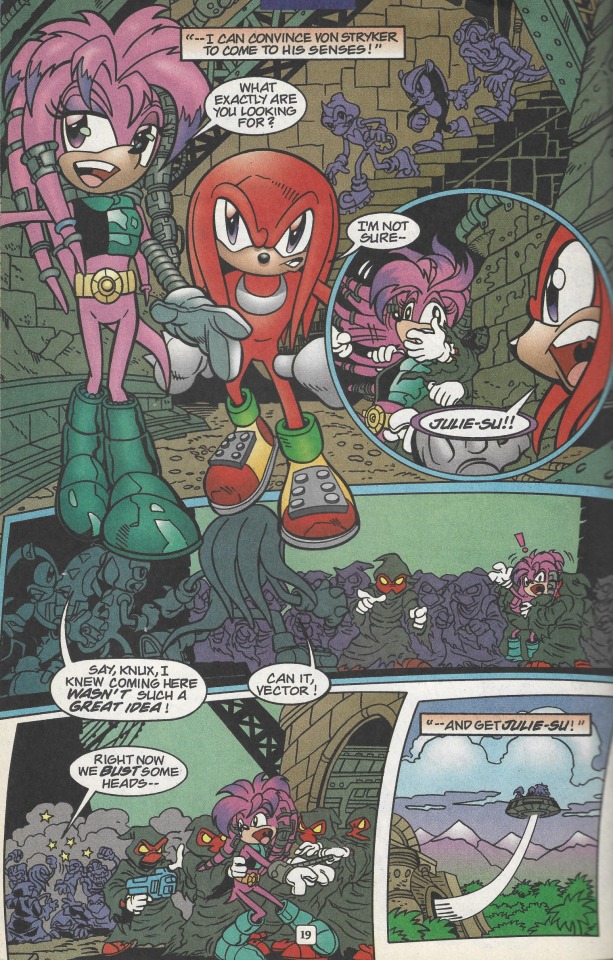
I've always hated how easily she gets kidnapped in this part. I would think why didn't she bring her gun but then again they did just get back from a wedding.

I'm so glad Lien-Da did not stick to wearing yellow. It makes her look way too similar to Lara-Le. Note I believe this is the first time that Julie-Su interacts with Lien-Da face to face.
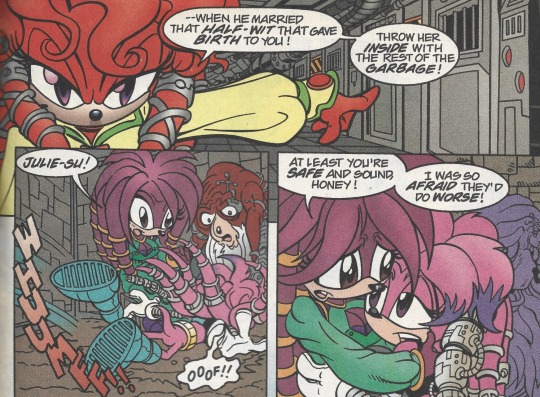
Throw in the garbage and discarded that's a apt metaphor for her role in this story and for upcoming issues. Spoiler coming up is the Green Knuckles saga (Sonic 92-118) and it is truly the epitome of meandering.
#julie su the echidna#knuckles the echidna#archie sonic#julie-su#archie knuckles#knuckles comic book#archie sonic the hedgehog#chaotix#dark legion#mighty the armadillo#Lien-Da#espio the chameleon#vector the crocodile#Sonic Adventure tie-in#Julie-Su history
12 notes
·
View notes
Text
Sean “Diddy” Combs’ countless abuse and sexual assault allegations caught up to him on Monday after he was arrested and charged following a grand jury indictment. Though he pleaded not guilty to three federal counts of sex trafficking and racketeering the following day (he’s in detention pending trial after being denied bail twice), the damage is done in the court of public opinion.
After the U.S. Attorney’s Office in the Southern District of New York unsealed Combs’ indictment early Tuesday morning, social media wasted no time cherry-picking the most searing details — most notably the narcotics and 1,000+ bottles of baby oil and lubricant that law enforcement seized during the March raids on Combs’ properties, which were allegedly intended for his abusive sex parties, aka “freak-offs.”
The shocking information and other parts of the indictment became another point of scrutiny for Combs after his 2017 rebrand as Brother Love failed to conceal the darkest parts of his alleged disturbing behavior behind closed doors.
The U.S. attorney’s indictment of Combs appears to bolster what many have alleged about the now-disgraced music mogul for years, with alarming claims of violence and abuse going back as far as 1990.
The beginning of Combs’ end began on Nov. 16, 2023, when his ex-girlfriend and former record company artist Casandra “Cassie” Ventura filed a bombshell civil lawsuit under New York’s Adult Survivors Act, accusing the Bad Boy Records founder of sex trafficking, rape, physical violence, intimidation and more over a period of 10 years. Combs and Ventura settled the suit just one day later. The latter’s public claims started a domino effect in the months following when seven more women and two men — including Combs’ former producer Rodney “Lil Rod” Jones and another former label artist, Dawn Richard of Danity Kane and Diddy — Dirty Money — to come forward with their harrowing accusations about Combs, all of whom claimed to at some point have been assaulted, abused or threatened by him.
But Combs isn’t the only high-profile figure in the music industry whose alleged misdeeds have been exposed recently.
Shortly before Ventura filed her lawsuit last November, former music executive Drew Dixon filed a lawsuit against famed producer L.A. Reid, claiming that he harassed and sexually assaulted her twice in 2001 while she was working for him (Reid’s request to have the case thrown out was denied in August). In June, producer The-Dream was hit with a sexual assault lawsuit; his former protégé Chanaaz Mangroe accused him of rape, sex trafficking and other violent actions (the producer filed to have his suit dismissed in August). That same month, Kanye West’s former assistant, Lauren Pisciotta, sued him for alleged sexual harassment (a legal representative for the rapper claimed the lawsuit was “blackmail and extortion”). And in July, Murder Inc. Records co-founder Irv Gotti was sued for alleged rape and abuse by a woman identified only as Jane Doe (he has denied any wrongdoing).
As history has shown, a culture of abuse has run rampant at the hands of powerful men in the music industry who refuse to take accountability for any of their alleged harm. Combs claimed in December that he “did not do any of the awful things being alleged” against him before brutal surveillance footage that surfaced in May clearly showed the music executive physically assaulting Ventura at a Los Angeles hotel in 2016 (Ventura detailed the same encounter precisely in her lawsuit). He later released a video apology on Instagram (which has since been removed from his page), taking “full responsibility” for his actions in the footage but for nothing else he’s been accused of.
That could change once Combs’ yet-to-be-scheduled federal sex trafficking trial begins, as his mountain of allegations is just the tip of the iceberg of what’s publicly known. Federal prosecutors’ extensive evidence of Combs’ alleged criminal enterprise will likely expose more, especially since they claim the mogul’s unlawful behavior persisted just days before his arrest.
Nonetheless, Combs’ indictment, which also cites unnamed associates and employees, signals a watershed moment many didn’t anticipate would come so soon after Ventura’s lawsuit — remember, it took over a decade for charges to come down on Jeffrey Epstein for his crimes. With prosecutors adamant about trying Combs’ case in a court of law, the American justice system has taken the first significant step toward holding the industry executive liable for his improprieties.
Now the music industry has officially been put on notice.
The public takedown of Combs is a warning to any wealthy, high-powered folks in the music space who indulge in similar criminal acts and the fearful enablers who stand by silently, unmoved and unwilling to intervene in corruption that goes on far too long. The same goes for those, like Russell Simmons, who thought fleeing could erase the horrid accusations coming from survivors who bravely went on record about the pain endured in their workplace or inflicted by their powerful employers. Evading justice only prolongs the damage, as Combs may be figuring out. But the day of reckoning, for the music industry, at least, is here, and the reign of its abusers is coming to an end.
If we as a culture are to do right by any survivors who have spoken up, we cannot stop with Combs. It’ll take more action and more listening to prosecute unscrupulous men to the fullest extent of the law. Moreover, the music industry stakeholders must commit to creating a safer environment by exiling those who continuously defame it with their deceit.
38 notes
·
View notes
Note
when was this i love recorded if he was whispering that he loves stephanie? and i don’t understand how could he love her when all she did was use him
Hi, anon.
I apologize for the late response, the holidays have been very busy over here, and I haven’t had much time to draft my responses 😩 As for the other anons who are still waiting for an answer from me, or a request to be fulfilled by me, I will get to them soon! I haven’t forgotten lol.
To answer your question, Chinese Democracy began recording in early 1998, and the sessions weren’t finished until 1999. This means, around that time, Axl must’ve removed the “Stephanie, I love you” outro from This I Love. However, he might’ve discarded it much later in the process since he was still working on the album until 2008.
The history behind This I Love is quite interesting. It is the oldest song off Chinese Democracy and it’s the only GNR song to be written in France. This I Love is known as a “post-illusion song” and was written in 1993, towards the end of the Illusion tours, when Axl was in Paris. This is also the same year in which Stephanie broke up with Axl in February.
The song transpired because Stephanie was cheating on Axl with Warren Beatty while he was touring overseas in 1992. During this time, she probably cheated on him with Charlie Sheen by going to his cocaine-infused parties.
In the book, Watch You Bleed: The Saga of Guns N' Roses, by Stephen Davis, he explains that “[Axl] hadn't slept in three days, and was unable to turn off his stage adrenaline to relax. Axl spent hours on the phone with Stephanie Seymour, and became agitated because she had reported that Warren Beatty had been calling her.”
In reality, she was dating Beatty and was sugar-coating the news to Axl, yet he suspected her ulterior motives. Why would Stephanie do this? Didn’t she love Axl?? My theory is she didn’t love him as much as he loved her. She might’ve had an infatuation with him at one point but, overtime, it sizzled away, and she became attracted to other men, solely because of their net worth.
Another theory I have is, after their breakup, Axl waited a full year before suing Stephanie because he was waiting for her to come back to him IF her relationship with Peter Brant failed. If she did come back to him within that year, he would’ve invited her into his life again, ultimately giving her another chance. But she never did.
In fact, when she was settling the case between Axl, Stephanie was 6 months pregnant at the time with Brant’s child. I find this skeptical because Axl always wanted to have his own kids. It doesn’t make any sense why she never got pregnant by Axl, but she did by Brant upon meeting him in February of ‘93. Something tells me that she did get pregnant with Axl’s child but she performed an abortion because…Well, she knew he wanted to have a family and, since she’s a bitch, she would do such a thing to him. But that’s another theory of mine! I don’t mean to stir the pot or create unnecessary drama about this topic 😅 Some people even speculated Stephanie was pregnant with Axl’s child, not Brant’s. I dunno…It’s just very interesting to think about.
Axl wrote This I Love because it was a way for him to cope with the loss and it was “a great healing experience to compose something you have no real idea you’re capable of.”
Furthermore, Axl devoted the songs to Stephanie’s son, Dylan, so he could find out the truth about their relationship instead of believing the lies from Stephanie. I’m not sure if Stephanie told Dylan about Axl, or if he heard Chinese Democracy, but it’s always best to take precautions IN CASE these things DO happen. Ngl it was a smart move on Axl’s part.
One frequent visitor to the GNR studio mentioned that "when Stephanie Seymour's birthday [July 23rd] came around, Axl seemed to shut down for weeks. A lot of this record is about Stephanie: She was his perfect woman, at least his image of what she should be.” I’ll never understand why Axl thought Stephanie was perfect, but maybe he saw something special in her that’ll we’ll never fully grasp, simply because we weren’t in that relationship to discover it. We can’t deny she had a huge impact on him, though.
Another detail I’d like to note is Axl never blamed Stephanie for cheating on him. He always blamed the men, like Warren Beatty, for corrupting her. For instance, in 1993, Axl dedicated the song Double Talkin’ Jive to Beatty and bashed him on stage, using words, to a large crowd at one of his concerts. This tells me that Stephanie meant everything to Axl and was the “perfect” partner he was looking for in his life, compared to Erin.
17 notes
·
View notes
Text
i might have found the most dedicated (brainrotted) good omens fan.
Hey y'all my beloved maggots, so in the spirit of having too much time and still recovering from my illness, your beloved Mascot was lurking on the lovely world wide web. I ended up, as one does, looking up what the fictitious '1810 clerkenwell diamond robbery' might have alluded to.
Of course I ended up with a bunch of tumblr and/or good omens results and then one bloody other search result. Which is what I'm sitting in utter bewilderment thinking about.
I'll link it at the end of the post, but to brief you on it, it was an article with an impressively detailed description of the supposed 1810 robbery, with the mastermind being (rather than Jane Austen, which is what I'd have expected the fake story to have) Richard Turpin. I didn't know who the fuck this was, so I looked him up, and found he was a highwayman who was executed in 1739 (there was a wee bit of bodysnatchin' involved, too). One of the diamonds in this article/story was also called the Star of South Africa, which when I looked it up, apparently is a diamond that was not discovered till the second half of the 19th century.
Which is all good lovely article impressive gonchposting but then I glance through the rest of the website and it seems to have actual articles about crime? I know nothing about stuff that happened after the Roman empire, so you are free to tell me about the legitimacy of the articles, but the fact remains that there are many articles, dating from July 2023 to February 2024.
I hear Good Omens season 2 came out on 28th July 2023, so this person set up an entire site in a few days, wrote an article with an anachronistic highwayman and diamond, and then proceeded to actually fill the rest of the site with articles? Am I in the correct timeline here? Has the internet lost its hivemind?
Please can someone explain this to me? Is this the final stage of the brainrot? Is this what I'm doomed to experience? Because if so I'm suing the entire Good Omens fandom, yes, you all, for infecting me with it.
Or have I lost it and I hallucinated this entire internet experience?
#good omens mascot#good omens#weirdly specific but ok#asmi#good omens fandom#maggots#crowley#lgbtqia#aziraphale#neil gaiman#1810 clerkenwell diamond robbery#HOW INVESTED IS EVERYONE IN THIS BRAINROT#unreality#tw unreality#ineffable brainrot#good omens brainrot#dick turpin#star of south africa diamond#crime websites#crime#robbery#jane austen#good omens 2#good omens season 2#good omens meta#goncharov
90 notes
·
View notes
Text
Charles Leclerc, the Ferrari driver tells his story: «I feel good only with the helmet on my head»
At 26, the young Monegasque has already entered the legend of Formula 1. Thanks to his cold blood and the audacity of a driving style that does not contemplate fear, Charles Leclerc has become "The predestined" for his fans. Since he was a child he loved red cars and with Ferrari he fulfilled his dream…
Almost 130 Grands Prix in Formula 1, 28 podiums, 22 pole positions and five victories: at 26, Charles Leclerc is already making history. His favorite driver is Ayrton Senna but «there are many I admire: Prost, Lauda, James Hunt, Michael Schumacher and Lewis Hamilton. However, Ayrton Senna (the Brazilian champion who died in a tragic accident at Imola in 1994, ed.), is my all-time idol. From what I was able to see in the documentaries that tell his story and by speaking with those who knew him in life, I discovered that he was a special person to say the least, not only behind the wheel - he was perhaps the best driver in history - but also as a human being." Leclerc's childhood is marked by a deep bond with his father Hervé (he bears his name on his helmet) who was also a pilot - «dad was my number 1 fan» – and by his untimely death in 2017. «I was four years old, I told my father that I wasn't feeling very well and didn't want to go to school. Of course I was pretending like all kids do. However, I don't know why, he indulged me and took me to the go-kart track of his best friend, Philippe Bianchi. Seeing other children running on the track, I wanted to try it too. For my first car I chose the color red. And I think I fell in love with this sport after just three laps." On that go-kart track Leclerc lives his dream of one day becoming a Formula 1 driver and there he meets his lifelong friend, Jules Bianchi, Philippe's son. In karting, Charles Leclerc collected one victory after another, also because "I didn't know the concept of braking". At 17 years old in 2014, he entered the “Formula Renault 2.0” with the Fortec Motorsports team. He took seven podiums and collected two victories, earning second place in the championship. In 2015 he moved to Formula 3 and, despite an accident on the Zandvoort circuit (Holland), which compromised the final position in the standings, and the death of his friend Jules Bianchi in July, after the accident at Suzuka on 5 October 2014, Leclerc he doesn't lose the desire to compete. «Formula 1 killed people I loved, but I can't help it», he declared some time later.
What was your first ever Grand Prix? «Macau in 2015. But I like to remember the first time I saw one. I was still a child, I had a friend whose apartment had a balcony overlooking the Monte Carlo circuit. Obviously I was already rooting for the red cars, even though I didn't yet know that they were Ferrari. It was simply my favorite color." In the 2016 GP3 season he won the title with the "ART Grand Prix" team, even if, during the last championship race in Abu Dhabi, he chose to retire. Does a pilot ever feel afraid? «I am a human being, even if I run at 300 kilometers per hour. Beautiful moments alternate with very difficult ones, I'm not a superhero. It was in 2017, when I thought I wouldn't be able to become a Formula 1 driver, that I felt a real feeling of fear." But it is precisely in 2017 that the turning point arrives. A year earlier Leclerc had taken part in the Ferrari Driver Academy. With the first free practice session of the British Grand Prix in 2016, he began his experience as a test driver for Haas and then for Ferrari. Over the course of the following year he became increasingly noticed, thanks to a series of victories - among them that of the FIA Formula 2 championship - and multiple tests of skill at the wheel of his car. In the 2017 championship he participated in four free practice sessions with Sauber, the first of which in the pouring rain on the Sepang circuit (Malaysia), and it was with the Swiss team that he became a Formula 1 driver. On board the Sauber C37, despite some difficulties, Leclerc demonstrates consistency and ends the 2018 season in 13th place in the drivers' standings with 39 points, voted "rookie" of the year. But what happens before a Formula 1 race? «Before running, a lot of tension builds up. I have been doing breathing exercises since I was a boy. They help me stay calm, so I can achieve a level of concentration that maximizes my potential. Preparation is 90% of the total work in a race." Before getting into the car there is also space for a ritual moment. «I only feel good when I wear the helmet and everyone comes out of the pit lane», he says, «the cockpit is like a nest, I don't feel any sensations, zero tension. There I relax while waiting for the race."
In September 2018, Scuderia Ferrari announced that the Monegasque driver would replace Kimi Räikkönen, alongside Sebastian Vettel. «I was on a boat in Monaco. I had put the phone on silent mode, I find the call from Maurizio Arrivabene (head of the Ferrari team ed.). I told the friend I was with to turn off the engines, that the head of Ferrari had called me and I wasn't hearing well. I understand that he wouldn't have taken me to Ferrari. It seemed a little strange that he called me to tell me, I was disappointed. Fifteen seconds later he called me back and told me he was joking. I attacked and dived into the sea, it all seemed so surreal. Me in Ferrari…". Even though his first time in Maranello dates back to a few years earlier as he reveals in the book “Le prodige” written by Rémi Boudoul: «I was 11 years old, but I didn't enter. I sat in the parking lot and imagined a structure similar to the one seen in “The Chocolate Factory”. With the Oompa Loompas running around." In 2018 his first race of the season in Australia ended with a fifth place, but the real affirmation came with the Bahrain Grand Prix, where he won his first pole position and finished the race in third place. The season continues with ups and downs. After a first victory in Belgium came the triumph on the Monza Circuit, in front of the delirious Scuderia Ferrari home crowd. Leclerc also arrived in pole position in Singapore and Russia, and ended the season in fourth place with 264 points, consolidating his reputation among the most promising talents in Formula 1. 2020 began with a second place in Austria. However, the Ferrari SF1000 demonstrates some limitations in subsequent races. Leclerc retires in Styria and ends up outside the points in Hungary. A bad accident in Monza, from which he emerged unscathed, represents a critical moment in that unspectacular year, which ended in eighth place in the drivers' standings.
The following year, the new Ferrari SF21 proved to be more competitive, allowing Leclerc - now at the Prancing Horse with Carlos Sainz Jr. - to achieve good results, including fourth places in Imola and Spain. In Monaco, he takes pole position but retires due to damage to the car before the race. His only podium came in Great Britain, finishing the season in seventh place in the drivers' standings. 2022 is more than positive. He wins the Bahrain Grand Prix, followed by a second place in Saudi Arabia and victories in Australia and Austria. He finishes in second place among the drivers, behind Max Verstappen. In 2023, with his SF23 single-seater, he achieved the second podium of the season in Austria, while in Great Britain he finished ninth. In Belgium, after some changes to the car, he gets pole and finishes third. In the Italian Grand Prix, in Monza, he started on pole and finished fourth. Beyond the races, twenty-six-year-old Charles Leclerc, just appointed ambassador of the Monegasque jewelery brand APM Monaco, tries to spend as much time as possible with his friends. «Ricardo, Alex, Thomas, Guillaume, Nico, Hugo, Joris. I'm happy with them, we go to the beach, to the restaurant, we play five-a-side football, we're all sporty and we train together. However, we have different lives, while they study, I live my passion. But I love racing, I love Ferrari." Ferrari which is not only synonymous with engines but also with fashion and Leclerc is a proud ambassador of the brand led by Rocco Iannone. «I often wear items from the Ferrari line, they are aerodynamic and the materials range from the more technical ones - which I am used to wearing every day in my work - to the more refined ones. I like that couture feel and above all the color that dominates in the Ferrari collections, a color that I don't think I need to specify...>>
124 notes
·
View notes